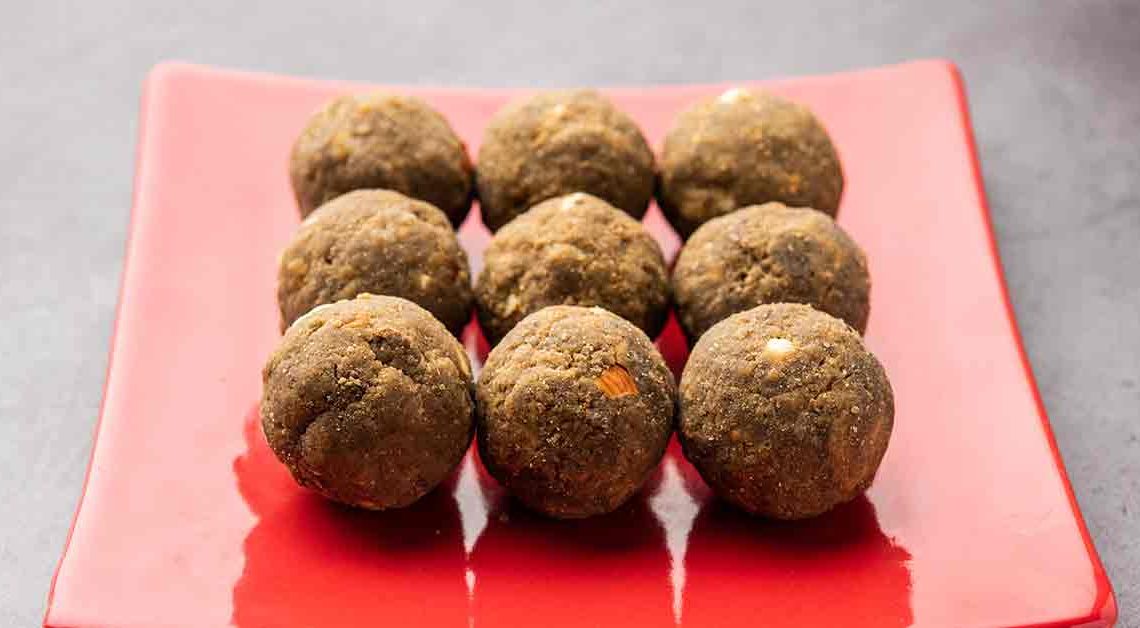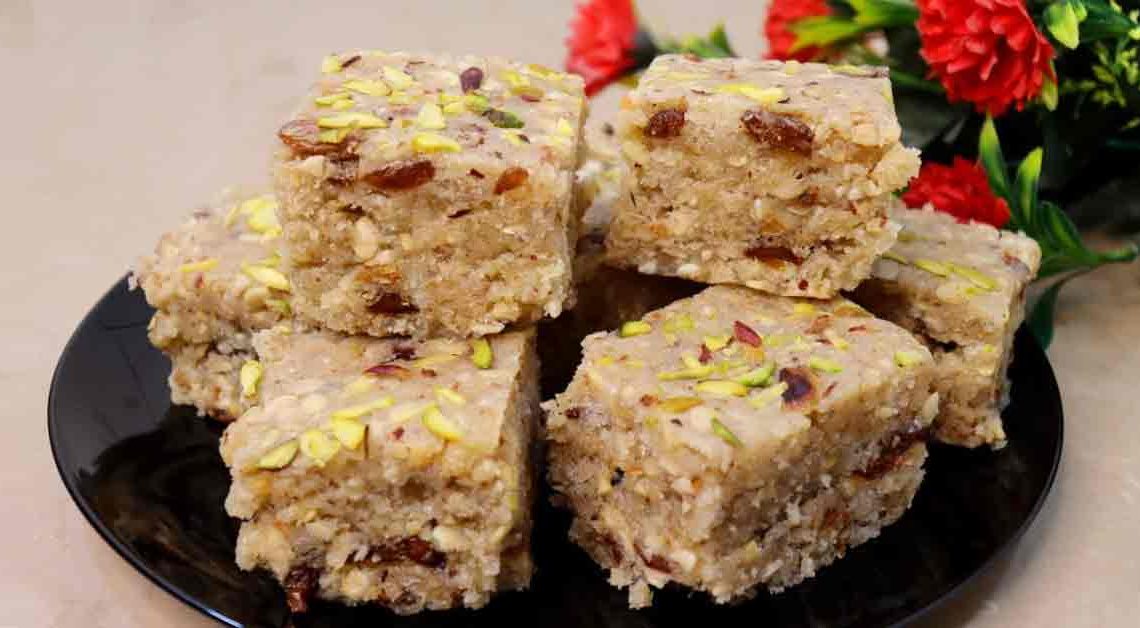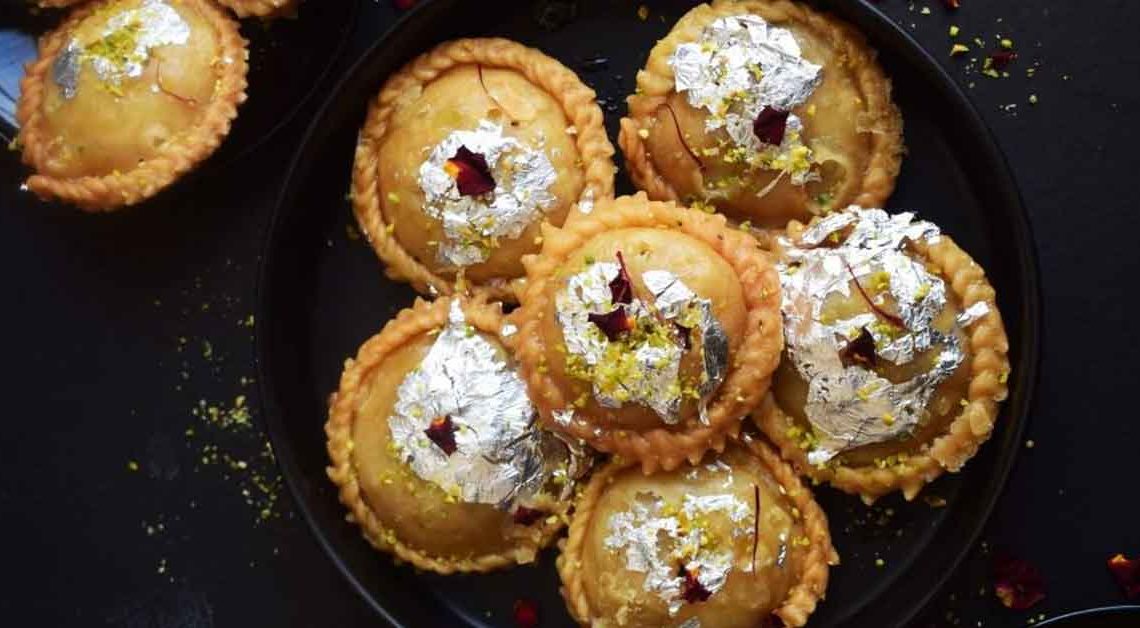Warming Bliss for Cold Evenings: Gond Ka Ladoo

Welcome to the enchanting world of flavors, where tradition meets indulgence and simplicity intertwines with sweetness. Today at Mithainama, we embark on a culinary journey to explore the magic of Gond ka Ladoo—a timeless treat that transcends generations and encapsulates the essence of Indian heritage.
Picture this: a golden sphere, delicately cradled in your palms, exuding the rich aroma of ghee, nuts, and the wholesome goodness of gond. Gond ka Ladoo, a culinary masterpiece hailing from the heart of India, has been a cherished delight during festivities, celebrations, and those cozy evenings that demand a touch of sweetness.
What makes these ladoos truly extraordinary is not just their taste but the artistry involved in their creation. The careful amalgamation of roasted gond, fragrant spices, and the perfect balance of sweetness results in a confectionery marvel that transcends ordinary treats.
Join me on this exploration of flavors as we delve into the history, facts, and cultural significance of Gond ladoo. Get ready to awaken your taste buds and discover the allure of Gond ladoo like never before!
Origin of Gond Ka Ladoo
Gond ka Ladoo traces its origins to the heart of Indian culinary traditions, with roots deeply embedded in Ayurveda. The star ingredient, “gond” or edible gum, is derived from the sap of certain trees. Historically, this sweet concoction has been celebrated not only for its delectable taste but also for its numerous health benefits.
In Ayurveda, gond is valued for its warming properties, believed to be particularly beneficial during the winter months. The gum is known to provide strength, boost immunity, and aid in digestion. Over the centuries, the wisdom of Ayurveda has been passed down through generations, influencing the culinary practices of Indian households like Ragi ladoo, Methi Ladoo or Til ke ladoo.
Traditionally prepared during festivals, postpartum periods, or as a winter treat, Gond ladoo has become a symbol of love and care. The act of making and sharing these ladoos carries the essence of familial bonds and cultural richness.
History of Gond Ka Ladoo
The history is intertwined with the rich cultural and culinary heritage of India. This traditional sweet has its roots in Ayurveda, the ancient Indian system of medicine, where gond (edible gum) is highly regarded for its medicinal properties.
Gond, derived from the sap of certain trees, has been a part of Ayurvedic practices for centuries. It is believed to have warming properties, making it particularly beneficial during the cold winter months. Ayurveda suggests that gond provides strength, boosts immunity, and aids in digestion.
Over time, the incorporation of gond into culinary preparations became a natural evolution, leading to the creation of ladoo. The sweet is often associated with postpartum care for new mothers, as it is believed to aid in their recovery and provide nourishment. Additionally, it is a popular treat during festivals, celebrations, and winter months when the body craves warmth and energy.
Cultural Significance
Gond ka Ladoo holds profound cultural significance in India, playing a role in various aspects of life, from culinary traditions to health practices. Here are some key aspects of its cultural importance:
Ayurvedic Heritage: The use of gond is rooted in Ayurveda, the ancient Indian system of medicine. Ayurveda attributes medicinal properties to gond, considering it beneficial for strengthening the body, boosting immunity, and aiding digestion. The ladoo, therefore, becomes a delicious and nutritious way to incorporate these health benefits into the diet.
Festive Celebrations: The ladoos are an integral part of festive celebrations in India, especially during occasions like Diwali and other regional festivals. The preparation and sharing of ladoo symbolize joy, togetherness, and the sweetness of life. It adds a touch of tradition and nostalgia to the festivities, connecting generations through a shared love for this sweet treat.
Winter Comfort Food: Given the warming properties of gond, it is often made and consumed during the winter months. The ingredients are thought to provide warmth to the body, making it a comforting and energizing treat in colder weather.
Where is Gond Ka Ladoo Famous?
Gond ka Ladoo is particularly famous and popular in various regions of India. It is a traditional sweet that has found its place in the culinary heritage of the country. Here are some regions where it is especially cherished:.
Rajasthan: In Rajasthan, it is a staple during the winter months. The desert state’s traditional cuisine often includes this sweet delicacy, where it is relished for its warmth and nutritive properties.
Uttar Pradesh: It is a popular sweet in Uttar Pradesh, and it is often made during festivals and special occasions. The state’s rich culinary traditions include various types of ladoos, and Gond ladoo holds a special place among them.
Gujarat: While Gujarat has its own array of sweets, it is also appreciated in some communities. The ladoo might be prepared with regional variations, reflecting the diverse culinary practices within the state.
Interesting Facts and Trivia
Gond ka Ladoo, beyond being a delightful sweet, is a cultural symbol, a representation of tradition, and a culinary journey through the diverse and flavorful landscape of India.
- In many Indian households, it is prepared as a part of postpartum care for new mothers. The ingredients, such as gond, nuts, and ghee, are considered beneficial for the mother’s recovery and well-being.
- The act of preparing is often considered an expression of love and care. Sharing these ladoos with family and friends is a gesture that goes beyond the realm of culinary traditions, symbolizing affection and goodwill.
- In some communities, it is prepared as an offering to deities during religious ceremonies and rituals. The ladoos are considered a sacred sweet, symbolizing devotion and gratitude.
- The ladoo is not only delicious but also packed with nutrients. Gond provides energy and is rich in minerals, while the addition of nuts adds protein and healthy fats to the sweet.
- The recipe is often passed down through generations, contributing to the culinary heritage of Indian families. Each family may have its unique way of preparing this traditional sweet.
Did You Know?
Gond ka Ladoo, featuring the key ingredient of edible gum, has been a staple in Indian households for centuries. Beyond its deliciousness, this traditional sweet is infused with Ayurvedic wisdom, making it a wholesome treat with several health advantages.
- The inclusion of gond in the ladoo is rooted in Ayurveda, where it is considered to have warming properties. Consuming it during colder months is thought to help keep the body warm and boost immunity.
- Gond, along with other ingredients like nuts and ghee, adds a nutritional punch to the ladoo. It is a source of energy, minerals, and healthy fats, making it a wholesome snack.
- Gond is known for its digestive benefits. The ladoo, with its blend of spices like cardamom, can aid digestion, making it a suitable treat after meals.
- The combination of ingredients in it is believed to have immune-boosting properties. This can be particularly beneficial during seasonal changes when the body is more susceptible to illnesses.
- In many families, Gond ladoo is considered a traditional tonic. It is prepared not only for its delightful taste but also as a holistic approach to well-being, aligning with the principles of Ayurveda.







